Here’s a tree I’ve been anticipating to work on, a premna japonica or commonly known as musk maple.
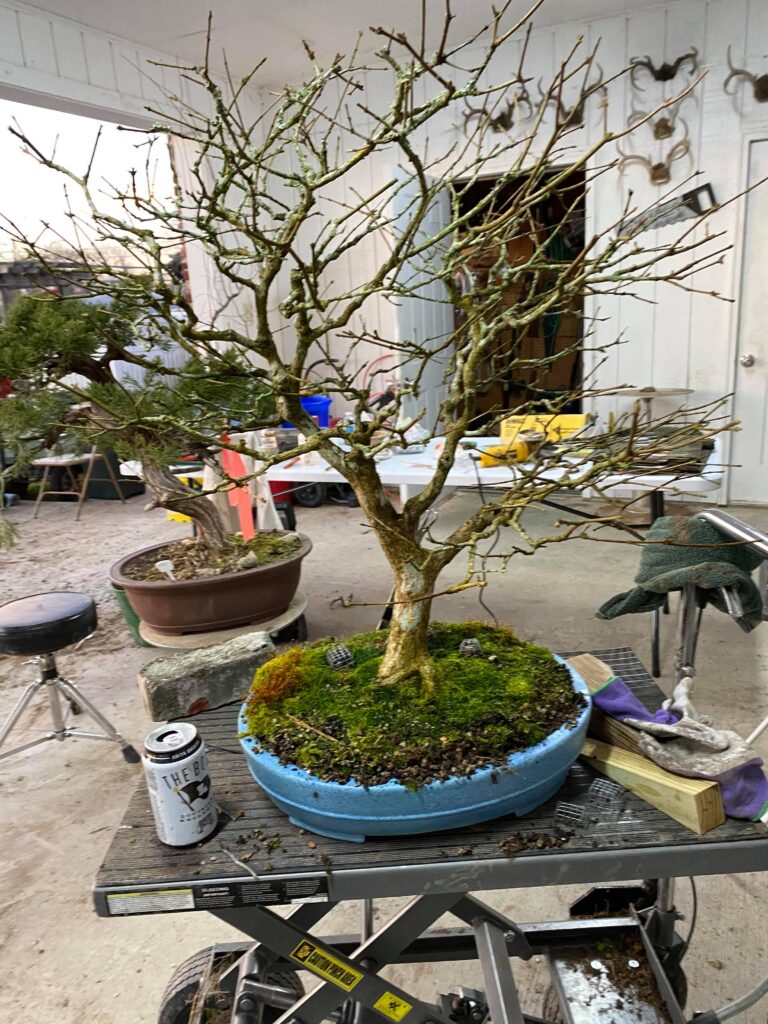
There are a couple of different varieties in the premna used for bonsai. There is the much more tender and tropical premna mircophylla that gets confused for this species. P. mirophylla has a small and ovate leaf compared to p. japonica’s more ‘maple’ shaped leaf. P. japonica is also a deciduous species that produces little white flowers that turn into little black ball like fruits. I think it’s a pretty sweet little tree.
I am not its original owner of this tree and it has apparently been around the block. It was formally owned by a gentleman named Damon Williams.
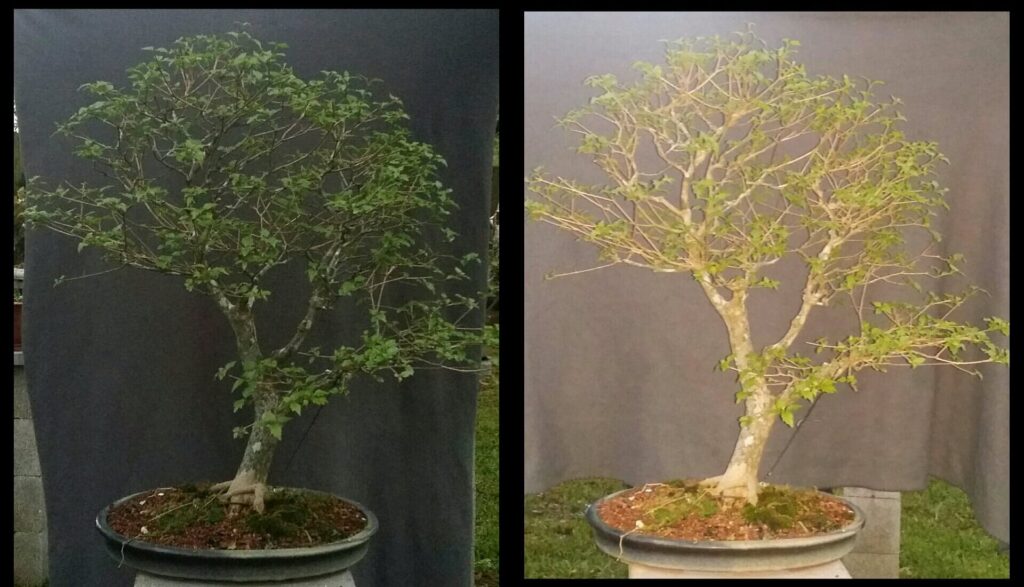
Damon gave me as much information about the tree as he could. The two photos above show the tree the year before we acquired it at the nursey. Damon had told me that he purchased the tree from a small time bonsai grower in Florida just past Pensacola. Unfortunately he could not recall the guy’s name but the claim is that the grower had grown the premna from seed over 30 years ago.
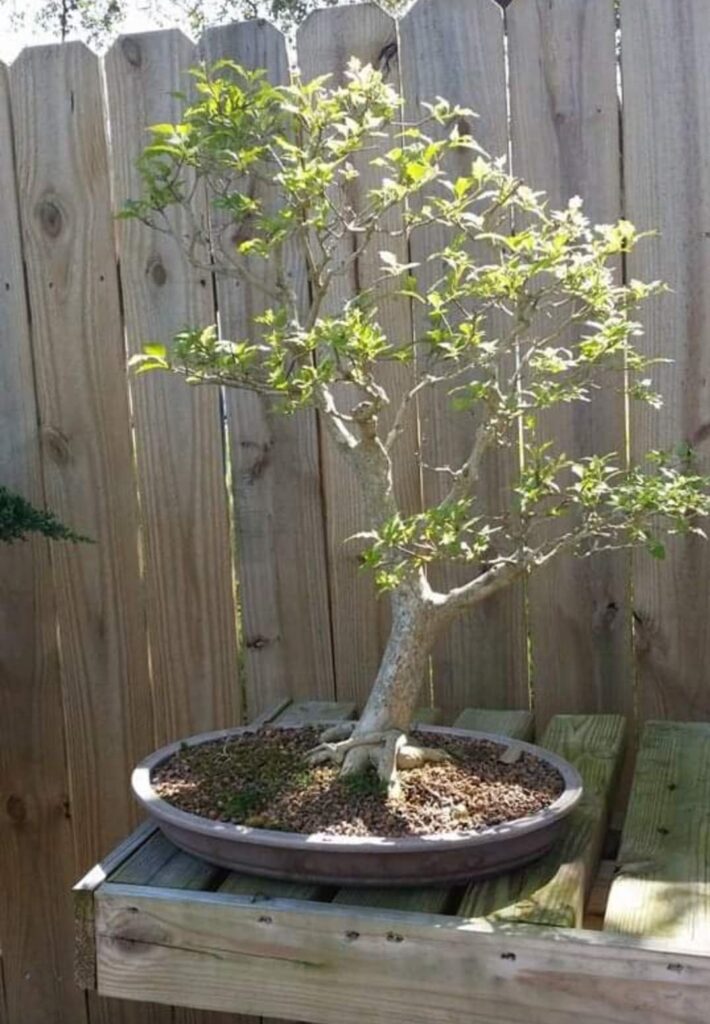
This photo is two year after Damon acquired it. As you can see the tree has gone through a few different bonsai containers. Interesting enough though is that all the containers are traditional Japanese. In the picture above you can see that the branching was a lot simpler and the crossing root on the front of the nebari was not quite fused. This crossing root has become a real issue as of late for the tree.
I could not help myself. This tree has had time to really come into its own and its a look that only truly old pieces of material have. I’m a sucker for deciduous designed trees as well. Plus, I have always wanted a musk maple in my collection. It was one of the first exotic species that sparked my interest when I first got into bonsai. So I took the tree in and now I have one more tree to care for.
I decided to let Dawn and Dana analyze the tree and help me make a decision on how to improve the design and solve the crossing root issue. This was after a 12 hour long binge of repotting other bonsai throughout the day and I was down for anything at this point.
Dawn presented me with a solution to my troubles with the tree:
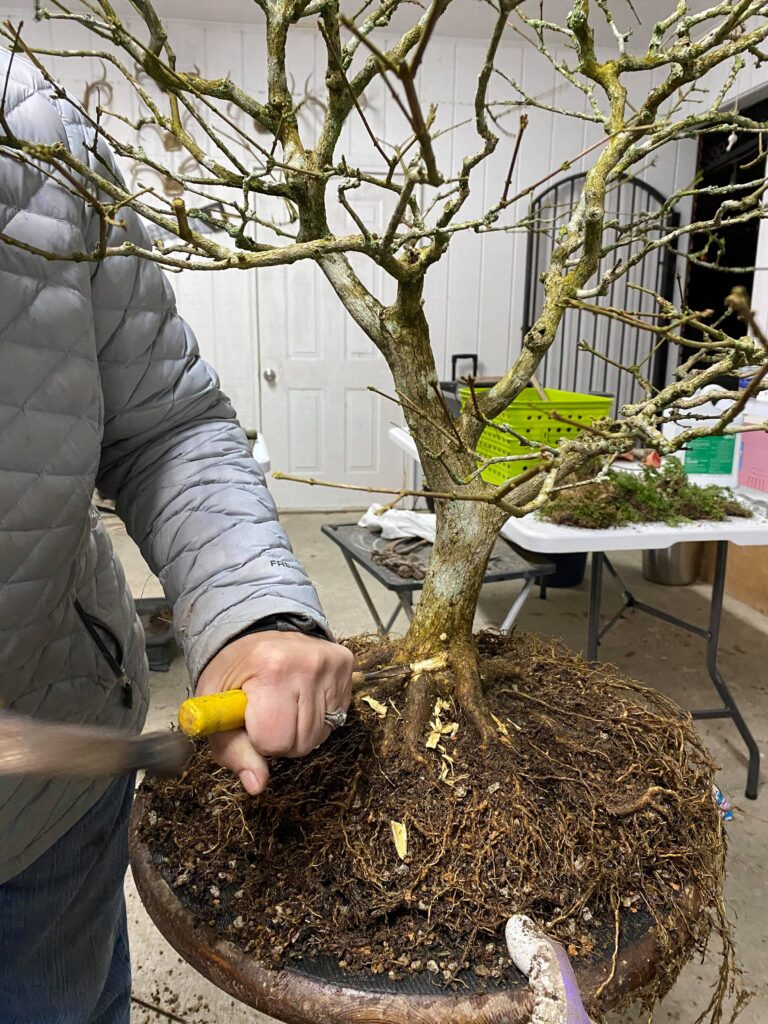
The things we do to our bonsai would make other pass out but the best course of action was to knock out the crossing root with a hammer and chisel. This is not as brutal as it appears. Dawn was gentle as one could be with a hammer and removed small sections of the root until the section beneath was revealed.
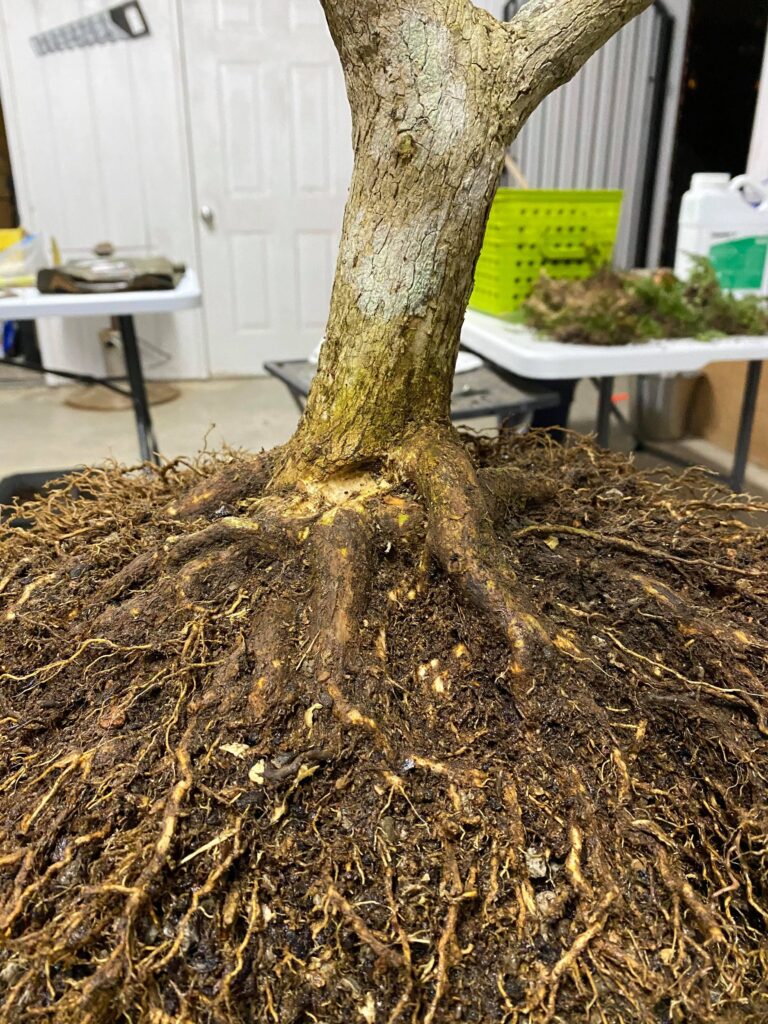
Now the crossing is not such an eye sore and the wound left behind will heal in a few years time. The indention was not as deep as I had presumed and bended rather nicely with the rest of the root mass. The wound was sealed with a healing paste so that it does not rot out. Also the end of the crossing root grafted itself to the rest of the nebari and making it not necessary to remove much more of it. If I had waited a few more years to commit and just do this work, the crossing root would have thickened to a point of no return and it would have left a much larger mark.
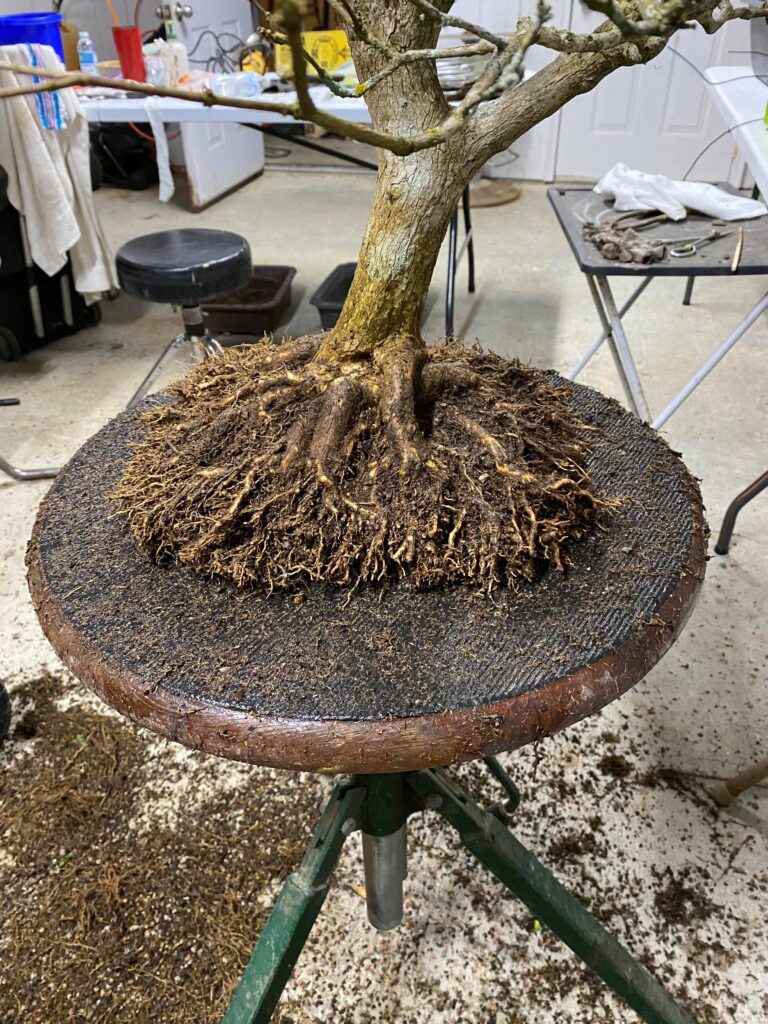
The root mass was further refined and thinned out. The premna had not been repotted in 2 years and had been allowed to grow rather freely with just the occasional prune back to hold on to its silhouette. I knew that when the time came to repot the tree that other big choices were going to be made as well. So I held off until the tree was strong and full of energy for this spring time to recover.
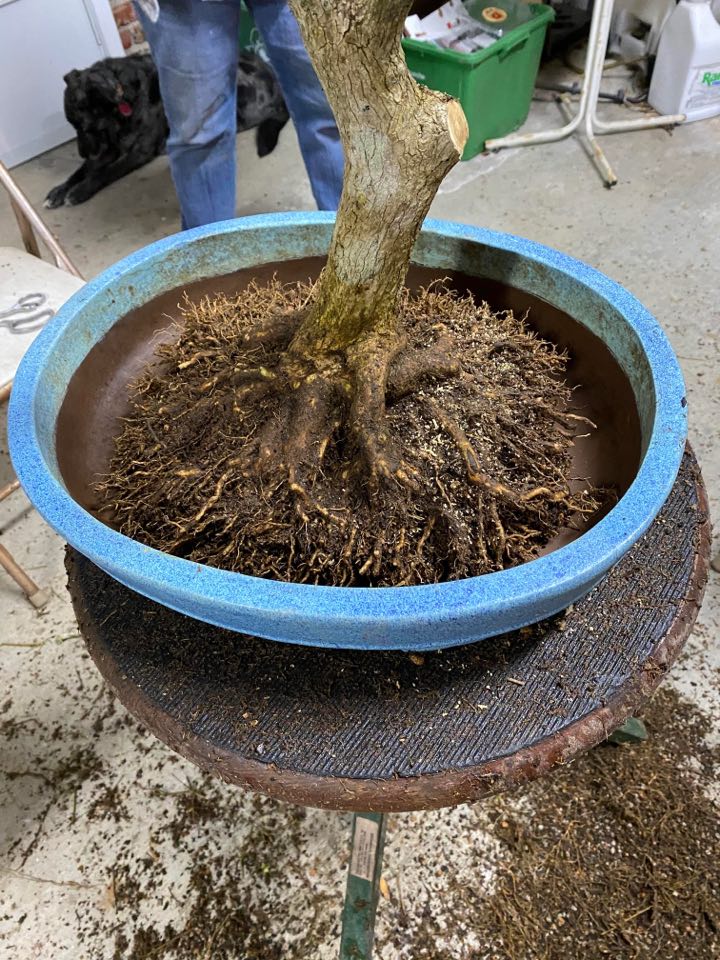
With the nice tight root prune the tree went back into its container with absolutely no issue at all. This is a definitely a well refined old bonsai root ball. For those of you who have old trees like this will understand how gratifying this looks. As note that something is missing, a branch was removed.
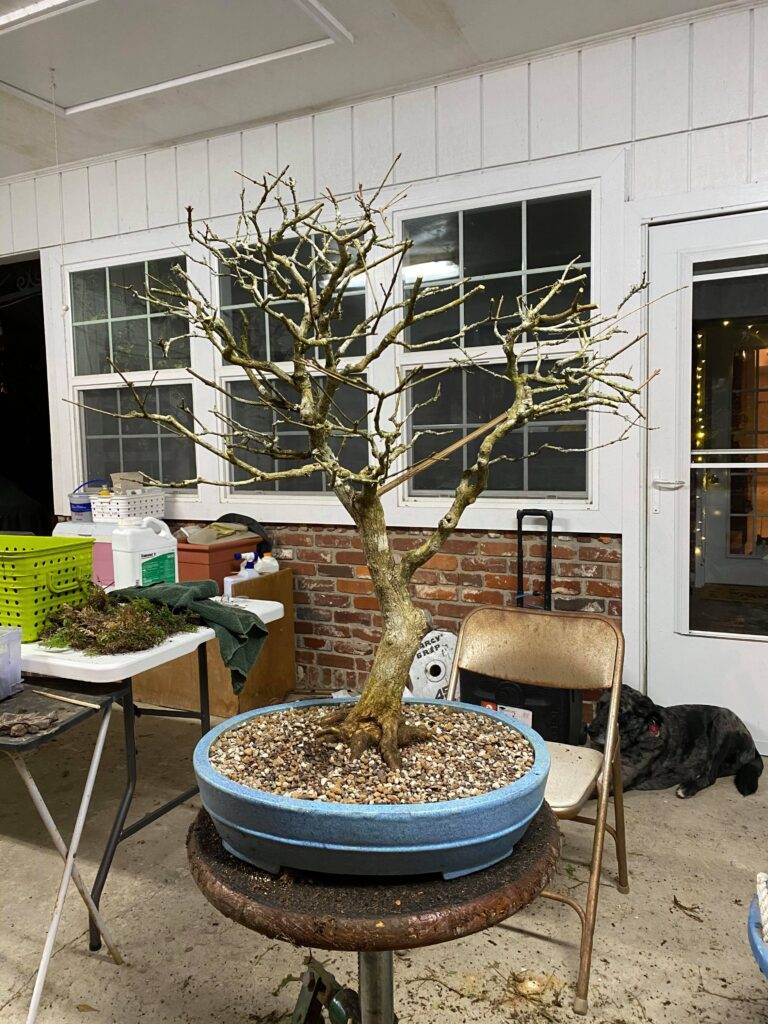
Dawn and Dana convinced me. The tree looks a lot more elegant without the first branch so it was removed as well. Removing the straight and uninteresting branch makes the tree easier on the eyes. The removed branch did not reflect the movement of the other two lines in the tree. If you refer back to the earlier pictures of the tree it looks very similar to how it appears now. I believe this was the original intention of the grower years ago, I just made a few edits that will move it forward.
Dana pointed out that a more simple and lower profile container would be better in the future. As far as I have on record for this premna it would be the 4th container change that I know of. I’ll have my eye better pot but I’m not going to rush it because this is bonsai. Considering that the tree is actually older then me by a few years that respect must be given. Respect in the aspect that great bonsai truly take time to develop. So I will pay this tree my respect for its longevity by being patient and giving it as much time as necessary to recover.
Dana made a good point and said look at the current container as a pretty grow out pot for now.
– Evan
*Next post about this tree will feature better photos so you can see the branching in detail. The work space at Dawn’s was limited on space and also there was not a back drop to get decent pictures of trees.*
